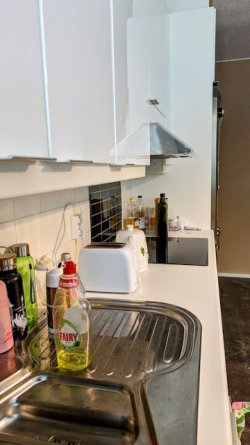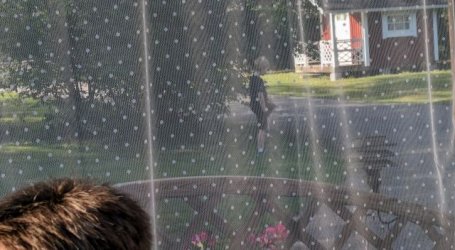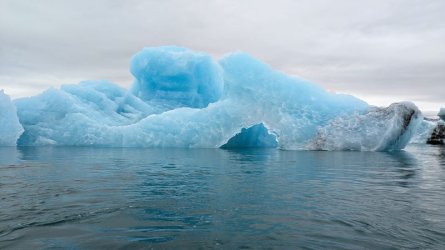- Joined
- May 25, 2013
- Posts
- 1,795
Today we are thinking of the real blueberry juice and staying home
First things first, the blueberry juice! Some here in AFF have taken liking to the blueberry juice served on AY flights. In fact, the only thing guaranteed on the AY flights are free water & juice, even on short flights. But what they offer is merely a highly diluted version. It's like drinking cordial. If you want the real deal, you head to a grocery store and look for 'mustikkakeitto' (blueberry soup) in the chilled juices section. It's a lot thicker and has traces of blueberry seeds (used to have plenty but they've "shrinkflated" that recently). It comes in 1L and 250 ml packs.
The one on the left is the original product. The other one is sugar-free ('sokeroimaton') but the flavour of sweeteners pushes through so I'd recommend the left one. Notice also the bilingual packs: 'mustikka' in Finnish and 'blåbär' in Swedish.
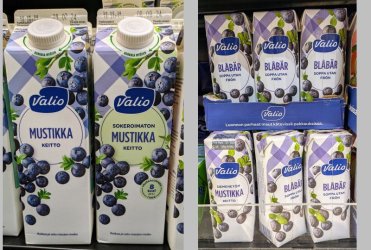
The glassware used in the AY J cabin you can find in Iittala stores. They have various sizes, including 5 cl shot glasses for your 'Salmiakkikossu' (a Finnish liquor with salted liquorice in vodka; be warned, it can be highly addictive; best served chilled, I keep mine in the freezer at home).
My parents had these as everyday drinking glasses when I was a kid. I didn't like them at all but had no clue back then of good design, value of items, etc. Fast forward a few decades and they are in vogue.
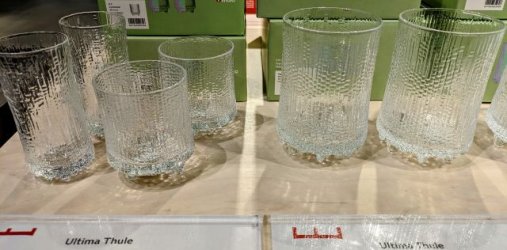
One thing Finland does intensely is research in functional foods. All kinds of protein alternatives were mainstream 10-15 years ago and berries have been valued for long. Among things I'm bringing home are these packs of crushed linseed & cranberry and other combos: all kinds of minerals, 37% of fiber, all-around health and goodness. Some dried berry powders will also follow me (sea buckthorn, lingonberry and blueberry have become my favourites).
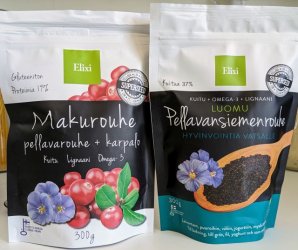
HOME FRONT
A sneak peek into aspects nearly every Finnish house has in one form or another. I am blessed by a family member offering me a place to stay in their home. This then provides me an opportunity to share a few aspects on how Finnish (and Scandinavian, overall) homes differ from Australian.
Dish drying cupboard. This is a must in Finland, every home has this! The idea is that whatever you wash by hand, you'll put them in here to dry. Usually plates, pots & pans, and bigger stuff on the lower shelf, and glasses, mugs, small bowls, etc on the second shelf. Cutlery you can place in a recess at the bottom of the first shelf or have a separate holder for them. Then you close the door to keep the kitchen looking nice and neat, and let it all dry there by itself. Notice how the bottom is open and all the water will drip straight back into the sink.
This one is a little bit messy but if this was mine, it would be for drying only and the storage would happen on the upper shelves and elsewhere.

"Home care room" (aka 'laundry' in Australia). A side entrance to the house which you use when you, kids, your dog or whatever is muddy, snowy or otherwise dirty. You'll undress or clean the dog here before entering the house proper. This is often connected to the kitchen. On the left, you have the hot water boiler, cupboard for cleaning equipment (vacuum, mop, detergents, etc), clothes drier (a full sized cupboard like this), entry to the shower room & sauna, and at the end a door out (hidden there). On the right, laundry care and heaps of storage space for all kinds of home care stuff.
This kind of a room is typical for houses built in the last 30-40 years. Some town houses have this, as well, but in apartments this would be difficult to arrange.
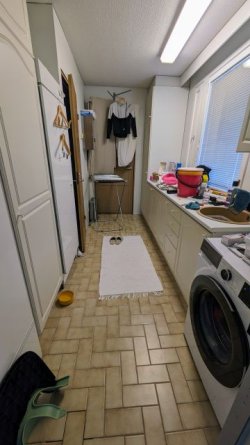
Entry. The direct translation from Finnish would be 'wind closet'. The idea is to keep this closed. When you enter the house, you come in through the front door, leave your shoes here (my brother keeps their jackets here, too), then you open the inner door and enter the house. This keeps the wet, snow and mud away from the living spaces. This is common in houses and town houses. The size of this one is about 2 * 1.6 m. In apartments, you enter the clothes rack & shoe storage / entry space, hang your outdoors clothes there and then continue to the living quarters.
Absolutely no walking shoes on beyond these spaces! It'd be a blasphemy unless you are specifically invited to keep your shoes on (even on a nice, dry summer day). When my friends come over to my place in Sydney, they already know to take their shoes off before we even start talking (and plenty of bonus points to those who also wash their hands automatically).
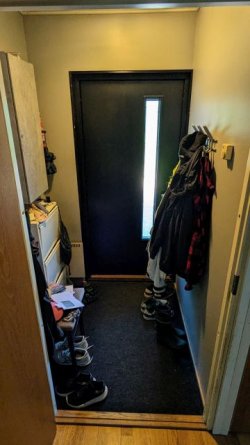
Kitchen layout. You notice two things: window over the counter and plenty of cupboard space. While Australian kitchens have the sink placed by the window (and I'm still baffled by it), Scandi kitchens usually have the sink on the side and by the window you either have a dining table or counter space (like here). In apartments, it's typically the dining.
You'll also notice the abundance of cupboard space. I've lived in three houses and three apartments in Australia and have had only one decently designed kitchen with ample space. One day again, one day...
The fridge is on my right, dining behind. In the lower left corner next to the oven, you see a tiny part of a tower of five containers for sorting the recyclables (plus cardboard separately as the sixth stream). They are emptied at a collection point by the local supermarket. The "home care room" is on the left. But where's the "red bin", you may ask? Always under the sink.
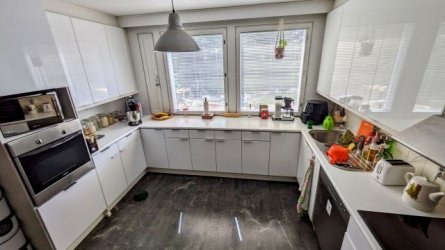
In the next episode, we head out to a supermarket.
First things first, the blueberry juice! Some here in AFF have taken liking to the blueberry juice served on AY flights. In fact, the only thing guaranteed on the AY flights are free water & juice, even on short flights. But what they offer is merely a highly diluted version. It's like drinking cordial. If you want the real deal, you head to a grocery store and look for 'mustikkakeitto' (blueberry soup) in the chilled juices section. It's a lot thicker and has traces of blueberry seeds (used to have plenty but they've "shrinkflated" that recently). It comes in 1L and 250 ml packs.
The one on the left is the original product. The other one is sugar-free ('sokeroimaton') but the flavour of sweeteners pushes through so I'd recommend the left one. Notice also the bilingual packs: 'mustikka' in Finnish and 'blåbär' in Swedish.

The glassware used in the AY J cabin you can find in Iittala stores. They have various sizes, including 5 cl shot glasses for your 'Salmiakkikossu' (a Finnish liquor with salted liquorice in vodka; be warned, it can be highly addictive; best served chilled, I keep mine in the freezer at home).
My parents had these as everyday drinking glasses when I was a kid. I didn't like them at all but had no clue back then of good design, value of items, etc. Fast forward a few decades and they are in vogue.

One thing Finland does intensely is research in functional foods. All kinds of protein alternatives were mainstream 10-15 years ago and berries have been valued for long. Among things I'm bringing home are these packs of crushed linseed & cranberry and other combos: all kinds of minerals, 37% of fiber, all-around health and goodness. Some dried berry powders will also follow me (sea buckthorn, lingonberry and blueberry have become my favourites).

HOME FRONT
A sneak peek into aspects nearly every Finnish house has in one form or another. I am blessed by a family member offering me a place to stay in their home. This then provides me an opportunity to share a few aspects on how Finnish (and Scandinavian, overall) homes differ from Australian.
Dish drying cupboard. This is a must in Finland, every home has this! The idea is that whatever you wash by hand, you'll put them in here to dry. Usually plates, pots & pans, and bigger stuff on the lower shelf, and glasses, mugs, small bowls, etc on the second shelf. Cutlery you can place in a recess at the bottom of the first shelf or have a separate holder for them. Then you close the door to keep the kitchen looking nice and neat, and let it all dry there by itself. Notice how the bottom is open and all the water will drip straight back into the sink.
This one is a little bit messy but if this was mine, it would be for drying only and the storage would happen on the upper shelves and elsewhere.

"Home care room" (aka 'laundry' in Australia). A side entrance to the house which you use when you, kids, your dog or whatever is muddy, snowy or otherwise dirty. You'll undress or clean the dog here before entering the house proper. This is often connected to the kitchen. On the left, you have the hot water boiler, cupboard for cleaning equipment (vacuum, mop, detergents, etc), clothes drier (a full sized cupboard like this), entry to the shower room & sauna, and at the end a door out (hidden there). On the right, laundry care and heaps of storage space for all kinds of home care stuff.
This kind of a room is typical for houses built in the last 30-40 years. Some town houses have this, as well, but in apartments this would be difficult to arrange.

Entry. The direct translation from Finnish would be 'wind closet'. The idea is to keep this closed. When you enter the house, you come in through the front door, leave your shoes here (my brother keeps their jackets here, too), then you open the inner door and enter the house. This keeps the wet, snow and mud away from the living spaces. This is common in houses and town houses. The size of this one is about 2 * 1.6 m. In apartments, you enter the clothes rack & shoe storage / entry space, hang your outdoors clothes there and then continue to the living quarters.
Absolutely no walking shoes on beyond these spaces! It'd be a blasphemy unless you are specifically invited to keep your shoes on (even on a nice, dry summer day). When my friends come over to my place in Sydney, they already know to take their shoes off before we even start talking (and plenty of bonus points to those who also wash their hands automatically).

Kitchen layout. You notice two things: window over the counter and plenty of cupboard space. While Australian kitchens have the sink placed by the window (and I'm still baffled by it), Scandi kitchens usually have the sink on the side and by the window you either have a dining table or counter space (like here). In apartments, it's typically the dining.
You'll also notice the abundance of cupboard space. I've lived in three houses and three apartments in Australia and have had only one decently designed kitchen with ample space. One day again, one day...
The fridge is on my right, dining behind. In the lower left corner next to the oven, you see a tiny part of a tower of five containers for sorting the recyclables (plus cardboard separately as the sixth stream). They are emptied at a collection point by the local supermarket. The "home care room" is on the left. But where's the "red bin", you may ask? Always under the sink.

In the next episode, we head out to a supermarket.









